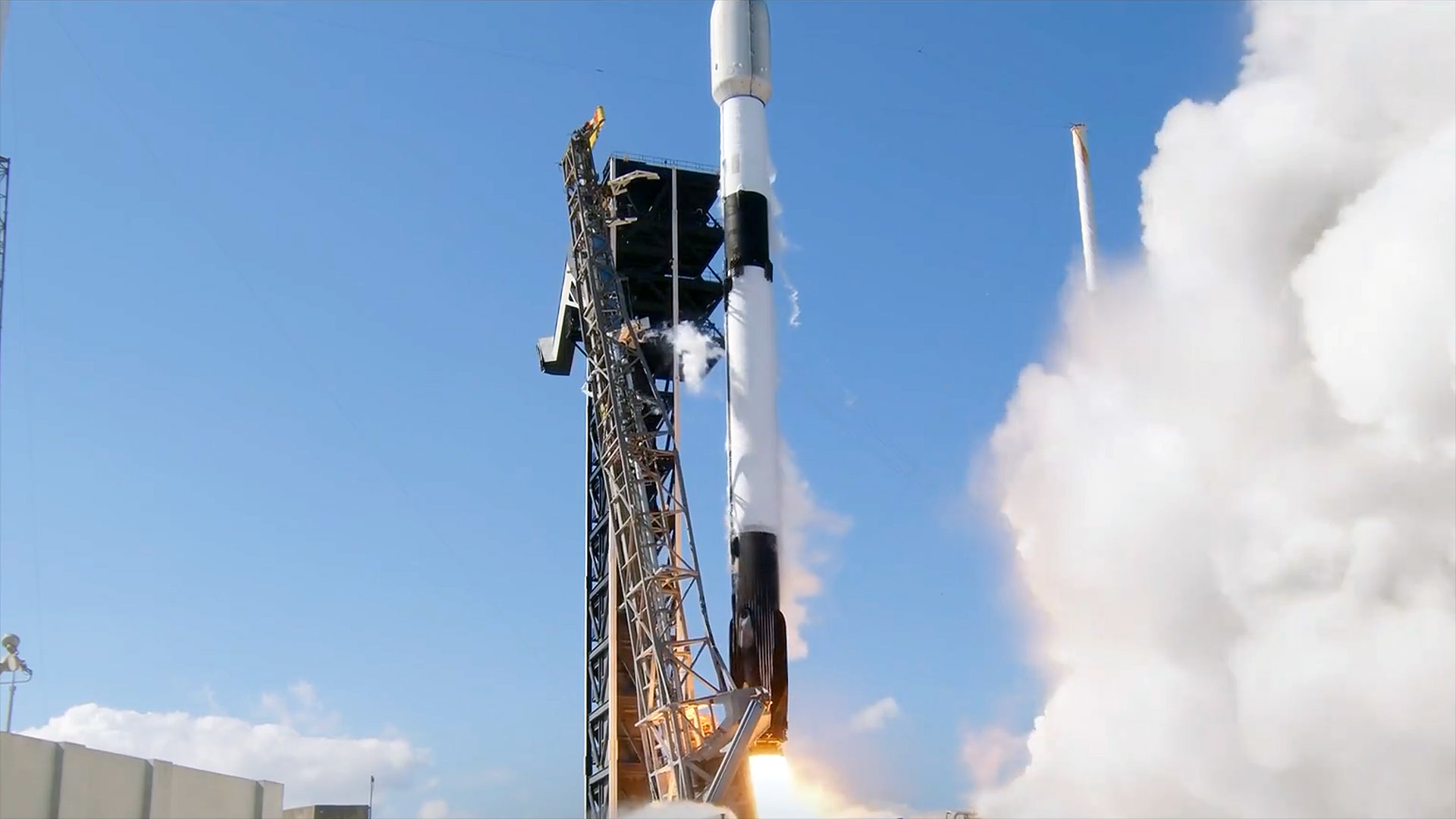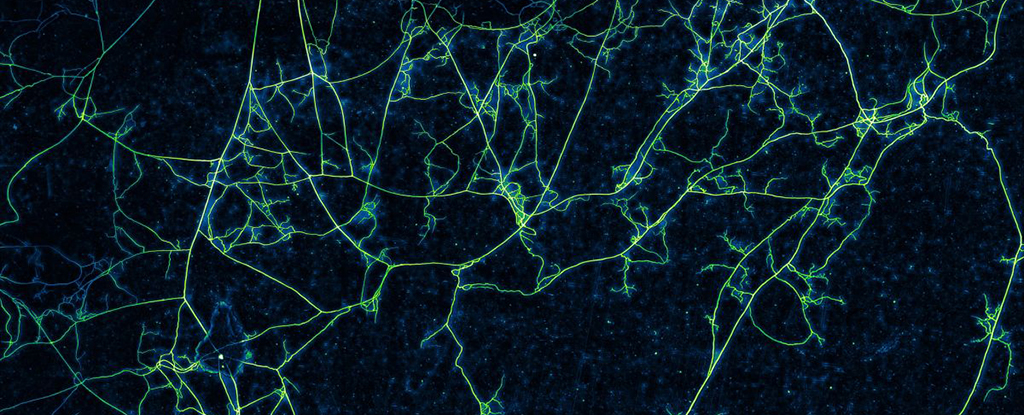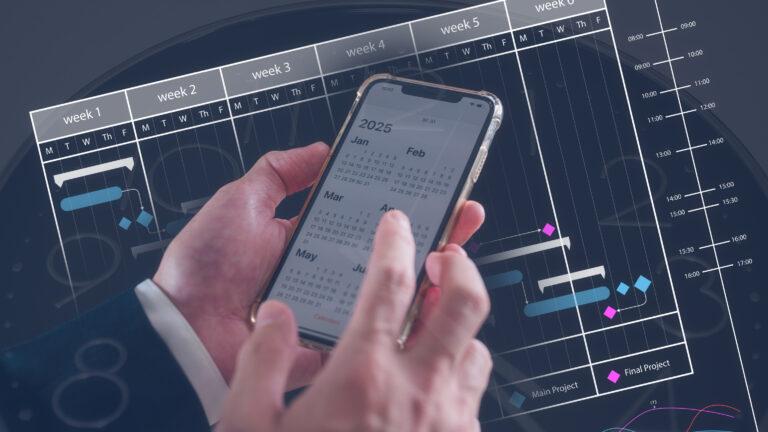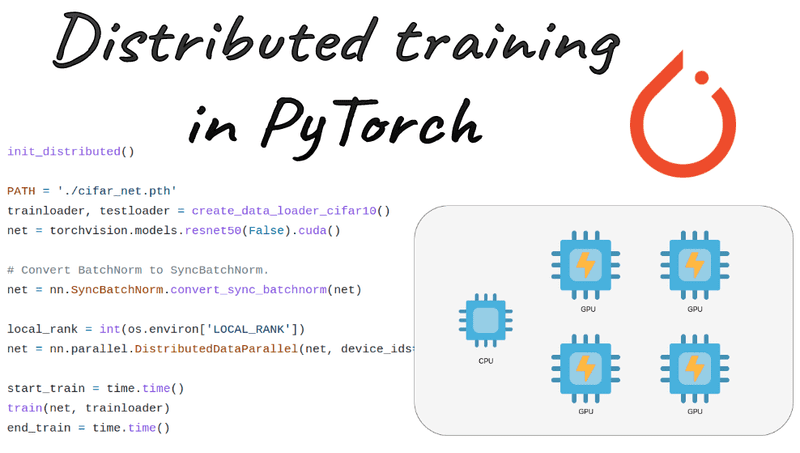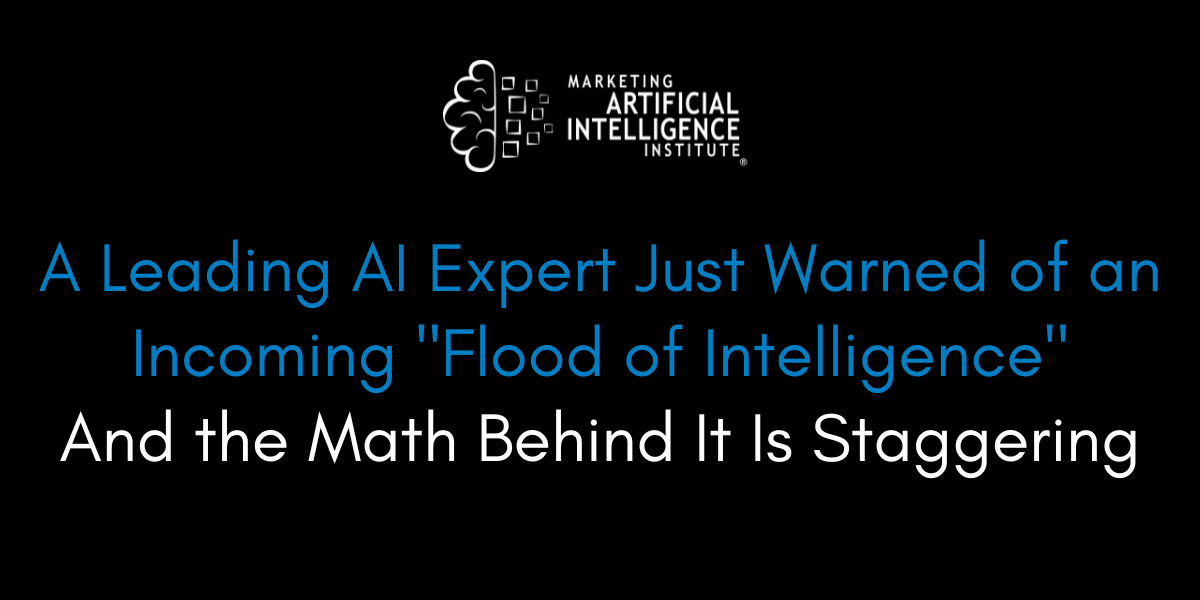10 Best AI Collaboration Tools (February 2025)
AI-powered collaboration tools are essential for productivity today. Prior to the big AI boom, teams spent over 85% of their time each week collaborating (meetings, emails, chat, etc.), leaving little time for deep work. The following tools use artificial intelligence to streamline teamwork – from summarizing long message threads to auto-generating project plans – so […] The post 10 Best AI Collaboration Tools (February 2025) appeared first on Unite.AI.


AI-powered collaboration tools are essential for productivity today. Prior to the big AI boom, teams spent over 85% of their time each week collaborating (meetings, emails, chat, etc.), leaving little time for deep work.
The following tools use artificial intelligence to streamline teamwork – from summarizing long message threads to auto-generating project plans – so you can focus on what matters. I have included a mix of project management, brainstorming, document, and coding collaboration platforms to give a full view. Each tool breakdown includes how AI enhances its usability, key features, user feedback, and pricing details for easy comparison.
1. Miro – AI-Powered Visual Collaboration

Miro is a popular digital whiteboard platform that teams use for brainstorming, mapping ideas, and workshops. Its new Miro AI (called Miro Assist) supercharges the experience by helping users generate content and organize ideas on the infinite canvas. For example, Miro’s AI can instantly create mind maps or diagrams from a prompt, and even auto-generate a presentation from a collection of sticky notes. This means a team can brainstorm ideas, then let the AI turn those into a structured slide deck – a huge time saver. Miro’s AI also helps facilitate sessions by summarizing discussions and grouping related notes, so teams quickly capture insights without manual sorting.
Miro puts a strong emphasis on ethical AI and data control. Team members can easily opt out of AI data usage, and the company follows strict AI principles – testing the AI for biases and ensuring it generates appropriate content. Practically, this gives users confidence to use features like auto-clustering sticky notes by topic or summarizing a board, knowing their data is not being misused. By bringing AI into its visual collaboration toolkit, Miro helps teams brainstorm and organize ideas more efficiently, while keeping users in control of their information.
Top Features:
- AI Mind Mapping & Diagramming: Turn complex ideas into structured outputs (user stories, flowcharts, technical diagrams, even code snippets) with Miro’s AI suggestions.
- Instant Presentations: Generate a polished slide deck from your Miro board (e.g. a mind map or set of sticky notes) with one click using Miro Assist.
- Auto-Clustering of Notes: Let the AI group related sticky notes by keywords or themes, helping uncover patterns and insights from brainstorming sessions.
- Session Summaries: Get a concise summary of what was discussed on a board, so anyone who missed the meeting can quickly catch up on key points.
- Data Privacy Controls: Miro’s AI features abide by strict privacy standards – users can opt out of data sharing, and all content stays private (Miro’s AI is tested for bias and only available in English so far).
2. ClickUp – All-in-One Collaboration with AI “Brain”

ClickUp is an all-in-one workspace that combines project management, documents, whiteboards, and chat. It has a deeply integrated AI engine called ClickUp “Brain” that works across all these features. This AI acts like a virtual project manager and assistant for your team. For instance, it can summarize long comment threads or project updates with one click, so nobody has to read through dozens of messages to get the gist. It also auto-transcribes meeting recordings and pulls out action items, generating meeting minutes for you. You can even ask the AI to draft a task description or create a project outline – it will generate tasks and assign owners based on your prompt, saving managers a ton of setup time. The result is a unified experience where routine work (status reports, summaries, task generation) is handled by the AI, and the team stays organized and informed.
ClickUp’s AI also includes an AI writing assistant built into docs and notes. This assistant can generate content from scratch or help rewrite your text to fit a certain tone or style guide. Team members use it to brainstorm ideas (e.g. blog outlines) and even translate content into different languages for localized projects. In chat conversations, ClickUp’s AI can suggest quick replies or polish a draft message, which speeds up communication. Essentially, every part of ClickUp – tasks, docs, chats, whiteboards – has an “AI copilot” to help.
Top Features:
- One-Click Summaries: Instantly summarize project updates, long documents, or Slack-style chat threads into key takeaways.
- Automatic Meeting Notes: Record meetings and let ClickUp transcribe them into a document, highlighting action items and decisions automatically.
- AI-powered Search & Replies: Use ClickUp’s AI to query your workspace for information (it can find answers in tasks or docs), or get suggested responses in chat so you can reply to teammates faster.
- Natural Language Automations: Create workflows with simple prompts – e.g. “when a task moves to Done, notify the team” – and ClickUp’s AI will build the multi-step automation for you without coding.
- AI Content Assistant: Use the AI writer to generate content or improve existing text. It can brainstorm ideas, enforce your brand tone, or translate text into other languages on the fly.
3. Monday.com – Work OS with Generative AI Assistant

Monday.com is a flexible Work Operating System (Work OS) where teams manage projects, tasks, and workflows on customizable boards. Monday has its own AI Assistant to automate and enhance many work processes. One highlight is Automated Project Planning – you can input a project goal or brief, and Monday’s AI will generate a suggested project plan with tasks and timelines. This feature helps create project boards in minutes instead of hours. The AI can also aid with communication: within Monday’s CRM and update threads, it can compose and rephrase emails or status updates for you, ensuring your messages are clear and saving you from writer’s block. Additionally, Monday’s AI can summarize complex updates or project data into a concise report with action items. Rather than reading through long progress notes, managers can rely on these summaries to see what’s important and what needs attention.
Another powerful aspect of Monday’s AI is the formula and automation assistance. Monday announced a Formula Builder where you can simply describe what you need (for example, “alert the sales rep 3 days before a deadline if status is ‘stuck’”) and the AI will generate the correct formula or automation recipe to implement that rule. This lowers the technical barrier for creating complex board workflows. Monday is also encouraging an ecosystem of AI apps on its platform – it opened up the AI framework so that third-party developers (and Monday itself) can build specialized AI integrations that users can plug into their boards. This means the capabilities of its AI Assistant can continuously expand.
Top Features:
- Automated Task Generation: Monday’s AI will create a set of tasks, owners, and timelines based on your input, jump-starting your project planning.
- AI Email and Update Writing: Within Monday (especially in the CRM or update sections), use the AI assistant to draft or rephrase emails and status updates. It quickly turns bullet points into well-written messages.
- AI Summary of Updates: Summarize long task updates or project dashboards into the key points and next action items.
- Formula & Automation Builder: Describe a workflow or formula you need in plain language, and Monday’s AI will generate the automation or formula block for your board.
- AI Apps Marketplace: Monday is opening its platform to third-party AI apps. This means you can add new AI-based widgets or integrations built by the community, all accessible via the Monday AI Assistant framework.
4. Teamwork.com – Client Work Management with AI Content Assistant

Teamwork.com is a project management platform tailored for teams that manage client projects (agencies, professional services, etc.). It has robust features for tracking tasks, time, and collaboration with clients. In 2024, Teamwork added a built-in AI Assistant that functions as a writing and idea-generation aide across the app. Wherever you have a text field in Teamwork – be it composing a task description, writing a project update, or drafting a client report – you can invoke the AI Assistant to help. It is powered by OpenAI’s GPT model under the hood, essentially giving you a smart editor and content generator right inside the project management interface. This is incredibly useful for drafting things like project briefs or brainstorming deliverable ideas without switching to another writing app. For example, a marketing agency could ask the assistant to “Brainstorm 5 blog post ideas for Campaign X” directly in a task note, and it will generate suggestions on the spot.
The AI Assistant in Teamwork has two modes: “Draft with AI” and “Improve with AI”. In Draft mode, it helps you create content from scratch – you can request anything from an outline of a proposal to a first draft of a social media post. Early users used this to quickly get past the blank page when creating project docs, even having it outline whitepapers and marketing copy ideas. In Improve mode, the AI acts more like an editor: you feed it existing text and can ask it to simplify jargon, fix grammar, or summarize it. For instance, you might draft a technical update and then have the AI “dejargonize” it for a non-technical client. It can also shorten or expand text based on tone. Because it is integrated, you can iterate – e.g., generate a draft, then refine it – all within Teamwork.
Top Features:
- AI Everywhere (Text Fields): Invoke the AI assistant in any text box in Teamwork – whether you are writing a task, a comment, or a document – to generate content or edits on the fly.
- “Draft with AI” Brainstorming: Use the Draft mode to brainstorm ideas and draft content quickly. It is great for creative ideation or speeding up report writing.
- “Improve with AI” Editing: Use the Improve mode to enhance existing text. Teamwork’s AI can simplify complex text, fix grammar, adjust tone, or even summarize a long update into a short summary for you.
- Instant Summaries: Quickly summarize meeting notes or lengthy client communications into bullet points.
- Built-in Proofreading & Tone Adjustment: The AI assistant doubles as a writing coach – it will catch spelling and grammar issues and can rewrite text to be more concise or more detailed as needed.
5. Notion – Knowledge Base with Integrated AI Assistant

Notion is an all-in-one workspace for notes, documents, databases, and project collaboration that has become very popular for its flexibility. You can create anything from a team wiki to a product roadmap in Notion. Notion AI is an embedded assistant that uses OpenAI’s models to help write and organize content. Notion AI can perform a range of tasks: it can draft content for you (for example, generate a first version of a project brief or an email), summarize existing notes or even database tables, and translate text between languages. If your team documents all their processes and updates in Notion (as many async teams do), the AI becomes a powerful aid – you can ask it to “summarize our release notes” or “find the action items in this meeting page”, and it will produce a concise output.
One of the most useful capabilities is AI-powered search and Q&A. Notion AI essentially lets you query your workspace in natural language. For instance, you could ask, “What did we decide about feature XYZ last week?” and if that decision is documented anywhere in your Notion, the AI can surface the answer or at least point you to the relevant page. This goes beyond keyword search by actually reading your pages for meaning. The AI is invoked very simply – in any Notion page, you hit spacebar and start typing your request, and the AI will activate.
Top Features:
- AI Content Generation in Notion: Ask Notion AI to draft articles, reports, or lists for you.
- Autofill Databases: Use AI to fill in database entries or tables. Notion AI can take a table of raw data and autofill a summary column or categorize items automatically, turning overwhelming data into clear, actionable information.
- Translation and Tone Writing: Notion AI will translate text into other languages (e.g., convert an English report into Spanish or Japanese) and can even help rewrite your text in a specific tone.
- AI Q&A and Search: You can query your entire Notion workspace in plain English.
- One-click Summaries: Notion AI can summarize a long page or a database of notes into a brief synopsis.
6. Asana – Work Management with “Asana Intelligence” AI

Asana is a leading work management tool used to track projects and tasks across teams. It introduced Asana Intelligence – a suite of AI features designed to tackle what Asana calls “work about work” (status updates, planning, etc.). Asana’s AI focuses on reducing manual overhead, especially for smaller teams that juggle multiple roles. For example, it can automate status updates and check-ins: Asana AI will compile a progress report on your project, complete with contextual info, and share it with stakeholders on a set schedule. This means team members no longer need to spend time writing weekly status emails – the AI gathers the latest task updates and generates a summary. Similarly, Asana’s AI can generate stand-up reports or meeting recaps, pulling the key updates from tasks and comments that occurred since the last meeting.
Another strength of Asana’s AI is helping with project setup and “macro-management.” It introduced things like Smart Goals and Smart Project Templates. With Smart Goals, you can draft objectives and Asana will standardize them and even suggest measurable key results, ensuring consistency across teams. Large organizations find this helpful for alignment. The Smart Project feature lets you describe the purpose of a project and Asana will generate a project with suggested tasks, sections, and even custom fields tailored to that purpose. Asana Intelligence also includes a Smart Editor which works when writing task or project descriptions – it will correct grammar and adjust the tone of your writing on request.
Top Features:
- Auto-Generated Status Updates: Asana’s AI will automatically compile project status reports and team check-ins based on real-time task data. Managers get a ready-made update (which they can tweak) to send to stakeholders, saving time each week.
- Smart Rules & Automation: Set up advanced workflow automations with guidance from AI.
- Smart Editor for Tasks: When writing a task or comment, use the AI Smart Editor to improve clarity.
- AI Project Creation: Use Smart Project Templates – tell Asana what your project is about, and it will generate a structured project plan with suggested sections and tasks.
- Smart Goals & Insights: Asana’s AI helps in setting and tracking goals. It can standardize goal language, suggest metrics, and even answer questions about project progress via an AI query interface.
7. Slack – Team Communication with AI Summaries and Search

In addition to channels and messaging, Slack has AI features to help users manage information overload. One key feature is Slack AI Summaries: with one click, you can ask Slack to summarize a busy channel or thread into a short recap. For instance, if a teammate posts an update, Slack might offer a one-click “Sounds good, thanks for the update!” response or even a more detailed question based on the context.
Another impressive capability is using Slack AI as a search and Q&A assistant. You can ask it questions like, “What decisions were made about Project X last week?” and Slack AI will scan your conversations and files to provide an answer or relevant messages. This turns Slack into more than just real-time chat – it becomes an archive that you can actually get insights from without manual search.
Top Features:
- Channel & Thread Recaps: Instantly summarize any channel or conversation thread to get the key points without reading through every message.
- AI-Generated Replies: Get suggested responses for messages.
- Ask Slack (AI Q&A): Pose a question in Slack’s AI tool and it will search your Slack history to find the answer. It surfaces relevant messages or files and summarizes the answer it found.
- Enterprise Security & Compliance: You still have SSO, domain claiming, and Enterprise Key Management to control access. None of your data is used to train outside models.
8. Confluence (Atlassian) – Wiki Collaboration with Atlassian Intelligence

Confluence is Atlassian’s platform for knowledge management and team documentation – basically a wiki for organizations to create pages, share documentation, meeting notes, specs, etc. Atlassian integrated its Atlassian Intelligence (AI) into Confluence to enhance asynchronous collaboration. Out of the box, Confluence has pages, whiteboards, and spaces for organizing info; with AI, these become much more powerful. For example, you can now have Confluence’s AI draft content for you: if you want to create a new page, you can input a prompt and the AI will generate a first pass at the document, pulling in any relevant info it can find in your workspace. It can also summarize existing pages or lengthy comment threads.
One very interesting feature is AI-driven search predictions. When you use Confluence’s search bar, Atlassian Intelligence can tailor the results to you by learning from your role and past activity. For example, if a marketer searches for “Q3 roadmap”, the AI might surface the marketing roadmap or campaign plans first, whereas if an engineer searches the same term, it might show the product development roadmap first.
Top Features:
- AI Content Creation & Cleanup: Quickly turn rough notes into polished Confluence pages. The AI will take bullet points or messy notes and generate a well-structured document.
- Automatic Action Items: Highlight meeting notes or requirements, and let Confluence’s AI extract action items or next steps.
- Slack Integration for Q&A: You can enable Atlassian Intelligence in Slack, meaning you can query Confluence from Slack directly.
- Personalized Search Results: Confluence’s AI gives search predictions tailored to you. It learns which spaces and pages you interact with most.
- Enterprise Data Protection: All AI features respect Atlassian’s enterprise-grade security.
9. Coda – All-in-One Docs with Powerful AI Assistant

Coda is a collaborative document platform that blends the flexibility of documents with the power of spreadsheets and apps. Think of it as a combination of a doc, a table, and a mini-app builder – teams use Coda for project trackers, meeting notes, databases, and more. Coda AI is an impressive in-doc AI assistant. One standout feature is the AI Chat panel inside any Coda doc. This allows you to ask questions about your doc’s content as if you were asking a colleague. For example, if you have a project doc with tasks and statuses, you could ask, “Which tasks are behind schedule?”, and the AI will analyze the table in the doc and give you the answer or even generate a summary table for you.
Another good capability is AI Autofill for tables. Coda docs often contain tables that act like databases. With AI, you can now auto-generate values for an entire column based on other data. For example, suppose you maintain a table of tasks with a description column – you can add an “Effort Estimate” column and ask Coda AI to fill it in. It will read each task’s description and generate an estimated effort or a priority level, saving you from manually doing this for dozens of entries.Coda AI also serves as an editor and writing assistant. It can rewrite sentences, fix grammar, or change the tone of text anywhere in your doc on command.
Top Features:
- In-Doc AI Chat: Each Coda doc comes with an AI chat sidebar where you can ask questions about your doc or request actions.
- AI Editor & Brainstorming: Highlight any text and use Coda AI to improve or transform it.
- AI Table Autofill: Perhaps Coda’s most powerful feature – you can automatically fill a table column using AI.
- AI-Powered Templates: Coda offers pre-built templates that demonstrate AI uses (e.g., a Product Roadmap that auto-generates spec outlines, or a Meeting Notes template that auto-generates follow-up tasks).
10. GitHub Copilot – AI Pair Programming for Code Collaboration

GitHub Copilot is an AI assistant for software development that has revolutionized how developers collaborate with code. It can write code alongside you in real-time. Copilot is integrated into popular code editors (VS Code, JetBrains IDEs, etc.), and as you write code or comments, it suggests the next lines or entire functions using AI trained on billions of lines of public code. These suggestions are context-aware – Copilot looks at your current file and project structure, so it tries to follow your coding style and use your project’s variables/types correctly. Essentially, it’s like a knowledgeable collaborator who has read all of Stack Overflow and GitHub, offering help continuously.
In terms of collaboration, Copilot significantly speeds up routine coding tasks, which frees developers to focus on logic and problem-solving. Teams find that junior developers can progress faster (Copilot provides guidance and examples in-line), and senior developers save time on boilerplate or repetitive code. Copilot can even generate unit tests, documentation comments, and configuration files if prompted.
The impact on productivity and collaboration has been measurable. GitHub’s own research found that between 60–75% of developers felt more fulfilled and less frustrated when using Copilot, as it took away drudgery. It is worth noting that Copilot’s suggestions are not always perfect – developers still review and test everything – but even then, it often provides a useful starting point. Importantly, GitHub has implemented filters to avoid suggesting licensed code verbatim and encourages responsible use (the AI sometimes draws from patterns in training code, so there are settings to block exact matches from public repos to avoid copyright issues).
Top Features:
- Contextual Code Completions: Copilot suggests code in real-time as you type.
- Natural Language to Code: You can write a comment describing what you want (in plain English or any language), and Copilot will generate the code to do it.
- AI-Assisted Code Reviews: With Copilot’s chat features, you can ask for explanations or improvements.
- Multi-File Understanding: Copilot isn’t limited to the file you’re in – it can take into account other files in your project.
- Broad Editor & Tool Support: Copilot works in VS Code, Visual Studio, JetBrains IDEs, and even in the CLI (command-line) and GitHub’s web editor.
The Bottom Line
From writing and design to coding and project management, these tools bring artificial intelligence into everyday workflows to automate busywork and amplify creativity. It is important to note that AI is not a replacement for human collaboration, but a facilitator: summarizing when we do not have time, suggesting when we are stuck, and handling the repetitive tasks so we can focus on innovation and decision-making. As we have seen, each tool approaches AI in a unique way tailored to its domain, whether it’s brainstorming in Miro, or pair programming in GitHub, or knowledge management in Confluence.
When choosing an AI collaboration tool, consider your team’s specific needs: Are you drowning in chat messages? Slack’s summaries might help. Need to generate lots of content or documentation? Notion or Coda could be your friend. Managing complex projects? ClickUp, Monday, or Teamwork with AI can lighten the load. And for development teams, an AI coding assistant like Copilot can be a game-changer for productivity.
Embracing these can give your team a competitive edge – essentially, it is like adding a super-smart assistant to every team member. As always, it is wise to try out a few with your workflow and see which generates the most value for you.
The post 10 Best AI Collaboration Tools (February 2025) appeared first on Unite.AI.





























![[UPDATE] PlayStation Network is back and running](https://helios-i.mashable.com/imagery/articles/02ToD4H7iBKJXGD8xpj3dxR/hero-image.fill.size_1200x675.v1739025331.jpg)







